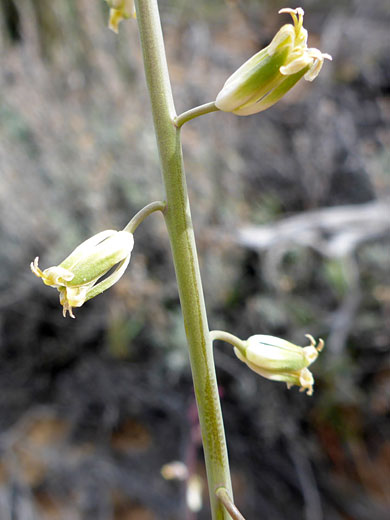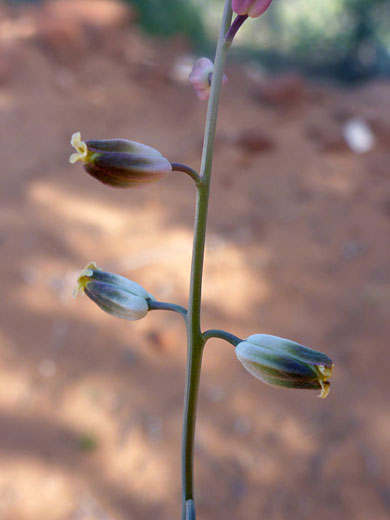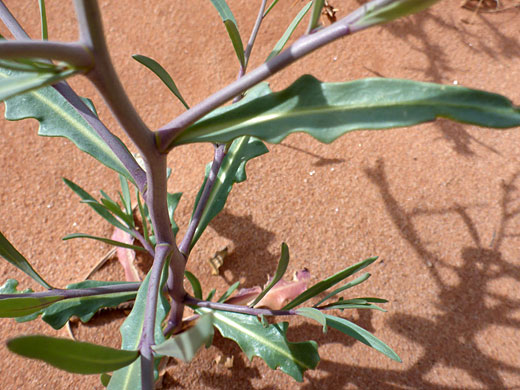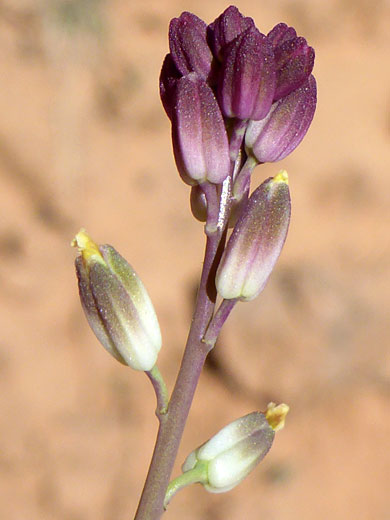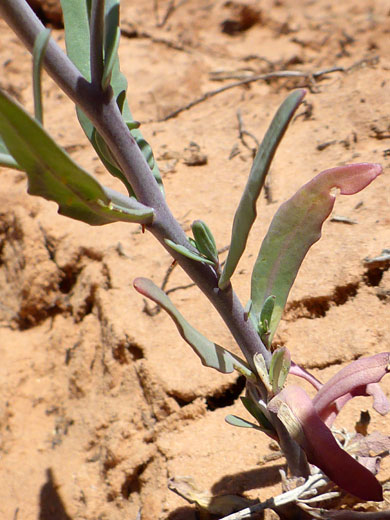Streptanthella Longirostris, Longbeak Streptanthella
Plants > Wildflowers > Brassicaceae > Streptanthella Longirostris

Purple buds of streptanthella longirostris - along the Whiterocks Trail in Snow Canyon State Park, Utah
Common names:
Longbeak streptanthella, little twistflower
Family:
Scientific name:
Streptanthella longirostris
Main flower color:
Range:
Mostly in Nevada, Utah and adjacent states
Height:
Between 10 and 20 inches
Habitat:
Gravelly and sandy places in deserts, pinyon-juniper woodland, hillsides and sagebrush; up to 7,200 feet
Leaves:
Narrowly lanceolate to oblanceolate, or linear; up to 3 inches long and a third of an inch across
Season:
January to June
Streptanthella longirostris produces one to several, slender, upright, branching stems. Leaves have a bluish-green coating, and occur around the base and the lower half of the stems, though basal leaves wither before flowering. Leaf margins are usually entire but may be toothed or pinnately lobed.
Buds are colored purple, and are clustered tightly together, but the stem lengthens as they open, in stages, so that the (alternate) urn-shaped flowers become quite widely separated. Sepals are variously greenish or purplish, oblong in outline, and occur in two slightly differently shaped pairs. Petals are yellowish, somewhat longer than the sepals, though still relatively short (around a quarter of an inch). The flower center contains six stamens, in three unequal-length pairs; at least one pair is exserted, and often curved backwards at the tip. Fruits are very thin, up to 2.5 inches long, and angled downwards.
Buds are colored purple, and are clustered tightly together, but the stem lengthens as they open, in stages, so that the (alternate) urn-shaped flowers become quite widely separated. Sepals are variously greenish or purplish, oblong in outline, and occur in two slightly differently shaped pairs. Petals are yellowish, somewhat longer than the sepals, though still relatively short (around a quarter of an inch). The flower center contains six stamens, in three unequal-length pairs; at least one pair is exserted, and often curved backwards at the tip. Fruits are very thin, up to 2.5 inches long, and angled downwards.
All Contents © Copyright The American Southwest | Comments and Questions | Contribute | Site Map


